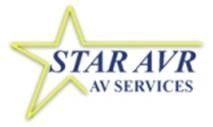Serving Eastern Pennsylvania Businesses
Since 1998
Contemporary Research
Suite 102
Carrollton, TX 75006
United States
The thrill of cheering one’s school to victory at a home sporting event is one of the hallmark experiences of American collegiate life. But how do you make this experience universally enjoyable when a significant portion of the student population is deaf?

This was a challenge the Rochester Institute of Technology (RIT) faced when designing its new ice hockey arena, the Gene Polisseni Center. RIT is home to the National Institute for the Deaf, the largest technical college in the world for students who are deaf or hard of hearing. To accommodate their special needs, a strong video presence throughout the new arena was a necessity.
RIT called on Penfield, NY-based Fusion Digital to engineer a video system with strict requirements for the 4,000-seat, 112,400-square-foot facility. The institute needed a system to control the facility’s 21 LG commercial television screens located throughout the concourse, team store, and private suites, and the system had to integrate with the in-house HD-SDI scoreboard and broadcast feeds.
 After first examining the possibility of using a system made up of Cat-6 data cables and baluns, Fusion Digital’s head engineer James Marquardt proposed an equally capable and much more cost-effective alternative: a network of coaxial cables and a Contemporary Research modulation system.
After first examining the possibility of using a system made up of Cat-6 data cables and baluns, Fusion Digital’s head engineer James Marquardt proposed an equally capable and much more cost-effective alternative: a network of coaxial cables and a Contemporary Research modulation system.
“With the coax and the Contemporary Research modulators, we can add, subtract, combine, and expand basically infinitely,” Marquardt said. “It’s an older technology, but with the Contemporary Research modulator, it does what we need it to do, more cost-effectively and with higher quality than we could have done with other cable.”
The video integration is built around the Contemporary Research QAM modulation system, which is comprised of two QMOD-SDI modulators and 12 QMOD-YPB2 modulators for television and signage. This arrangement provided an advantage over other options when it came to live broadcasting of the games throughout the facility.

